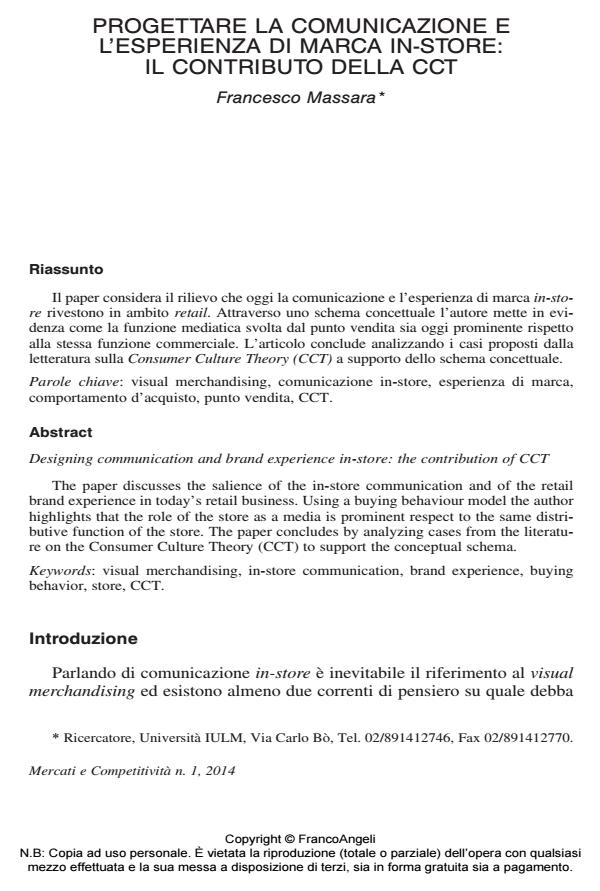Designing communication and brand experience in-store: the contribution of CCT
Journal title MERCATI E COMPETITIVITÀ
Author/s Francesco Massara
Publishing Year 2014 Issue 2014/1
Language Italian Pages 22 P. 61-82 File size 635 KB
DOI 10.3280/MC2014-001004
DOI is like a bar code for intellectual property: to have more infomation
click here
Below, you can see the article first page
If you want to buy this article in PDF format, you can do it, following the instructions to buy download credits

FrancoAngeli is member of Publishers International Linking Association, Inc (PILA), a not-for-profit association which run the CrossRef service enabling links to and from online scholarly content.
The paper discusses the salience of the in-store communication and of the retail brand experience in today’s retail business. Using a buying behaviour model the author highlights that the role of the store as a media is prominent respect to the same distributive function of the store. The paper concludes by analyzing cases from the literature on the Consumer Culture Theory (CCT) to support the conceptual schema.
Keywords: Visual merchandising, in-store communication, brand experience, buying behavior, store, CCT.
Francesco Massara, Progettare la comunicazione e l’esperienza di marca in-store: il contributo della cct in "MERCATI E COMPETITIVITÀ" 1/2014, pp 61-82, DOI: 10.3280/MC2014-001004